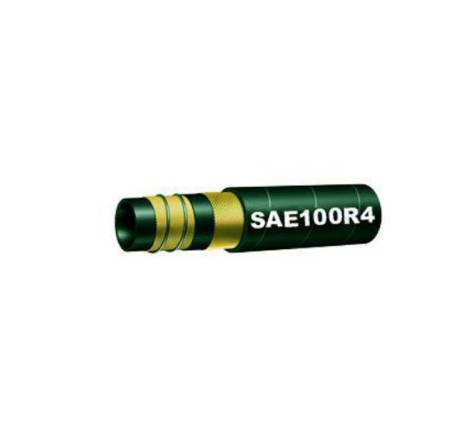Since many companies do not have a dedicated hydraulic system installation department, the arrangement of Hydraulic Hoses on the spot is complicated. The twisting and forced stretching and treading friction often occur, which greatly shortens the service life of hydraulic hoses. Paide Hydraulics will guide you to understand the correct hose arrangement.
1. The length of the hose will change under the action of pressure. The hose must have a certain amount of slack to allow shortening or elongation. If the hose line is too loose, it will affect the appearance of the equipment.
2. When the Hydraulic Rubber Hose is bent, the hose should have enough length so that its bending radius will not be less than the recommended minimum bending radius. If it is bent too much, the hose will bend and restrict or hinder fluid flow. In many cases, proper use of transition joints and hose joints will eliminate transition bends or kinks.

Hydraulic Rubber Hose
3. If the hose is twisted during installation, the working pressure will force it to straighten, which will loosen the joint nut, causing oil seepage or oil leakage. The twisting will cause the separation of the reinforcement layer and the hose will break at the stress point.
4. In the case of obvious vibration or deflection, the hose is allowed to lengthen. Of course, the metal pipe joint is not flexible, but the correct installation method can prevent the metal parts from being excessively stressed and avoid the hose from bending.
5. If the hose line is close to the exhaust pipe or other heat sources, a heat-resistant protective cover, fire jacket or metal baffle should be used for heat insulation. In any case, brackets and clamps or pipe clamps should be used to fix the Chemical Hose to reduce wear.
6. If a 90° transition joint is used, the appearance of this assembly will be cleaner, easier to inspect and maintain, and the number of hoses used will be reduced.
Copyright © Hengshui Huiya New-Mat Technology Co., Ltd. All Rights Reserved Sitemap
